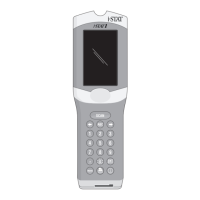CELITE ACTIVATED CLOTTING TIME/
(
CELITE
ACT)
Rev. Date: 30-Jan-12 Art: 714185-00N
The i-STAT
®
Celite
®
Activated Clotting Time test,
Celite
ACT, is a measure of the time required for complete
activation of the coagulation cascade.
1
In traditional ACT tests, coagulation is initiated by mixing a whole blood sample with a particulate activator,
and complete activation is indicated when extensive or localized clots form as activated thrombin converts
fibrinogen to fibrin. These clots are mechanically detected.
The i-STAT
Celite
ACT test is similar to traditional ACT tests except that the endpoint is indicated by the
conversion of a thrombin substrate other than fibrinogen and an electrochemical sensor is used to indicate
the event of this conversion. The substrate used in the electrogenic assay has an amide linkage that mimics
the thrombin-cleaved amide linkage in fibrinogen.
The substrate is H-D-phenylalanyl-pipecolyl-arginine-p-amino-p-methoxydiphenylamine which has the
structure:
Phenylalanine - Pipecolic acid - Arginine -- NH - C
6
H
4
- NH - C
6
H
4
- OCH
3
Thrombin cleaves the amide bond at the carboxy- terminus of the arginine residue (denoted by the two
dashes) because the bond structurally resembles the thrombin-cleaved amide linkage in fibrinogen. The
product of the thrombin-substrate reaction is the electrochemically inert tripeptide Phenylalanyl - Pipecolyl
- Arginine and the electroactive compound NH
3
+
- C
6
H
4
- NH - C
6
H
4
- OCH
3
. The formation of the
electroactive compound is detected amperometrically, and the time of detection is measured in seconds.
The test reports the Activated Clotting Time (ACT) as a whole blood time (WBT) in seconds.
The i-STAT
Celite
ACT test is calibrated to match the Hemochron Celite FTCA510 using prewarmed tubes.
However, users of the i-STAT
®
1 analyzer may choose to customize their individual i-STAT locations to report
ACT results as calibrated against the Hemochron Celite ACT using non-prewarmed (ambient) temperature
tubes. This customization affects the Patient path only, and will not be applied to the Control or the
Proficiency Testing pathway.
The customization in effect (prewarm or non-prewarm calibration mode) is identified on the analyzer screen
as PREWRM or NONWRM, respectively. Please note that different locations within a given hospital may
utilize different customization profiles. Prior to patient sample testing, ensure the appropriate calibration
mode is employed. For a comprehensive discussion of this customization feature, please see the Technical
Bulletin entitled “ACT Test Result Calibration Options: PREWARMED vs. NON-PREWARMED Result
Calibration Modes for the i-STAT
®
1 Analyzer”.
If results appear inconsistent with the clinical assessment, the patient sample should be re-tested using
another cartridge.
Intended Use
The i-STAT Celite Activated Clotting Time (
Celite
ACT) test is an in vitro diagnostic test that uses fresh, whole
blood, and is useful for monitoring patients receiving heparin for treatment of pulmonary embolism or
venous thrombosis, and for monitoring anticoagulation therapy in patients undergoing medical procedures
such as catheterization, cardiac surgery, surgery, organ transplant, and dialysis.

